24 - 30 JUNE 1945
|
|
|
24 June
1945

|
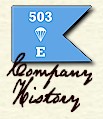 |
"Guriellas
turned over two women, one a Metizo, one Flip who had been prisoners of
Japs. Password blue-Color." |
|
|
È |
|
|
 |
|
|
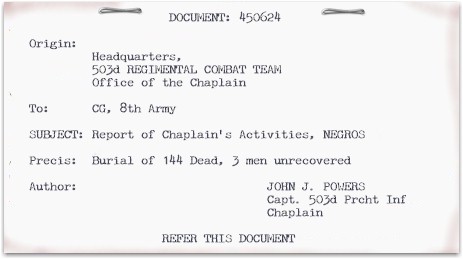
|
25 June 1945

 |
"Patrol
to Pico River Valley. 1 Nip KIA (15.9-31.45). 1 Jap KIA (16.55-32.3).
Tawain (sic) POW turned over by civilians. 3 day patrol sent to
Santiago. Lillian Keller
( Password of the day)."
|
|
|
È |
|
|
 |
|
|
|
26 June 1945

|
|
|
 |
"3 day
patrol to Santiago, found no Nip. Patrol tp Lulii, 2 Nips KIA. Password
- Peasley-Longfield." |
|
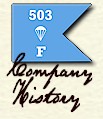
|
"Outpost
of the third platoon sent in Filipino messenger that they had sighted
two hundred Japs organized and armed. Company commander gathered up 25
men & started to San Pablo to help outpost. Met outpost on way & decided
to come in for reinforcements." |
|
 The
intelligence scouts were sending in reports that a large force of Japs
were coming out of the mountains heading our way. We did not know if
they would get to the highway or not and kept patrols going in jeeps all
night riding the highway. No Japs showed up. The Japs seemed to have
stopped at the foothills. The
intelligence scouts were sending in reports that a large force of Japs
were coming out of the mountains heading our way. We did not know if
they would get to the highway or not and kept patrols going in jeeps all
night riding the highway. No Japs showed up. The Japs seemed to have
stopped at the foothills. |
|
|
È |
|
|
 |
|
|

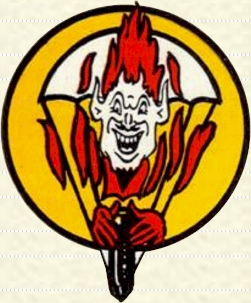 |
The death of Pvt. Dale C. Kellis of Ohio (SN 35131351) occurs.
|
|
Pvt. Kellis is interred at the American Military Cemetery at
Manila. The circumstances of his death
are presently unknown to the authors. Refer to
Honor Roll Data Card |
|
|
 |
|
|
27 June 1945

|
 |
"3 day
patrol returned. 2 Jap KIA, 1 POW at (16.0-31.6). 1 Jap POW, I KIA at
(16.0-31.3). Patrol to Paiter Hacienda (14.85-32.7) picked up 2 POW from
mayor of Cadiz. 2 POW capt by Gurirllas
(sic)
at Dainay Bridge turned over to us. Password Lily-Bell."
|
|
|
È |
|
|
 |
|
|
|
28 June 1945

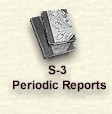 |
Major Clark, S-3
issues an HISTORICAL REPORT (OPERATIONS) which is
directed to the Eighth Army, summarizing the mission of the 503d PRCT since
25 March 1945. |

PHASE X
|
"28 June
1945, 1600- Mr. Scott and Mr. Sanford ,
civilian investigator for U.S.
Congress arrived for inspection of Sugar Mills on Islands. every
courteousy and convenience extended to them." |
|
|
|
 |
"6-28-45 2,
two day patrol, reported nil activity. Password Wheel-Barrel."
|
|
 Jesse
came in to Victorias and confirmed the Jap force sighted 26 June, though
by this time the number had grown to about four hundred men. The
Japanese had established headquarters in a large, two story house
at San Pablo, located on the east side of the river. This meant that the
river would have to be crossed to get to it from our side, but the river
was said to be shallow and easy to cross. The Japs were preparing their
defenses on sloping ridges several hundred yards west of the house,
between their HQ and the road. Jesse
came in to Victorias and confirmed the Jap force sighted 26 June, though
by this time the number had grown to about four hundred men. The
Japanese had established headquarters in a large, two story house
at San Pablo, located on the east side of the river. This meant that the
river would have to be crossed to get to it from our side, but the river
was said to be shallow and easy to cross. The Japs were preparing their
defenses on sloping ridges several hundred yards west of the house,
between their HQ and the road.
He reported that there were
good, concealed approaches from both the east, and the west.
The banks of the river were high on our side. There was waist-high grass
which could be used for concealment. A
force could approach along the river in concealment from the east and
the west, and get to the house without coming into direct contact
with the dug-in troops.
"F" Company had one
rifle platoon available, Dan Lee's third. One platoon was on bridge duty
and another had been used up by now in putting security guards out in
the haciendas. We also had one light machine gun platoon and our 60mm
mortar platoon. Regiment ordered Bailey to drive the enemy back into the
mountains and said that they were sending a unit of Philippine Regulars
to reinforce us. We didn't get too excited about the Filipino troops,
anticipating they would be as useful to us as guerillas. Our mortar
platoon would provide fire support.
Bailey's plan of attack
was that our rifle platoon, under Lt. Dan Lee, reinforced by the light
machine gun platoon, would travel by. truck until they were
near the river and about a mile east of the hacienda. They would detruck
and proceed on foot to the bend of the river, keeping
themselves concealed. Once in place they were to set up_a base of fire
covering the hacienda. At 1700 hour Lee would open his SCR-536 radio
telling the Filipino unit, who had come in from the west and would
be lying in concealment on the other side of the bend, that the mortars
would commence firing. When a smoke round was fired, both rifle
units would assault across the river, killing everyone in the house. The
machine guns would support this assault and only lift their fire as our
troops approached the house.
Before dawn the Filipino
unit showed up - one platoon under a Filipino 3rd lieutenant. We had
expected at least a company, but it didn't matter. They would not show
up anyway. We questioned the Filipino officer about his unusual rank. He
explained that he had graduated from the Philippine Military Academy in
June 1941. All graduates had to serve one year on probation as a 3rd Lt.
before they became regular army and advanced to' 2d Lt. No one had
ever promoted him. We were impressed. It seemed like all the other
Filipino officers were colonels.
|
|
|
È |
|
|
 |
|
|
HISTORICAL REPORT (DETAIL)
THE 503D PRCT IN NEGROS

|
 |
HEADQUARTERS
503D REGIMENTAL COMBAT TEAM
Office of the 5-3
APO 715
28
June
1945.
|
SUBJECT : |
Historical Report (Operations). Operation 1A
-
NEGROS (Occidental). |
|
TO : |
Commanding General, Eighth Army, APO
343. |
|
MAPS
: |
Negros 1:50,000, Negros 1:25,000, Negros
1:250,000. |
|
MISSION : |
To seize and occupy Northern NEGROS
(Occidental); to destroy hostile forces and reestablish
civil
government. |
The
503d
Regimental Combat Team was alerted on
25 March 1945
for a probable jump mission vicinity Alicante Airfield, Negros
Island, advance to the West and seize and
secure Saravia (town), then advance rapidly to the
South to
effect a junction with the 185th Regimenta1 Combat
Team in the vicinity Imbang River Bridge (17.2-10.2)
Preparations began immediately, which included
checking,
replacing combat equipment and detailed planning for the movement
and mission. Plans for the operation were completed and Field Order
#10 was distributed to the lower units 5 April 1945. Later in
the day orders were received from Headquarters, Eighth Army,
canceling the jump mission on the recommendation of the Commanding
General, 40th Division to the effect that the target area was clear
of enemy. Instead, orders were issued for an airborne movement to
Panay Island with subsequent waterborne movement to Negros Island
for a mission to be designated by the Commanding General, 40th
Division. Applying that portion of Field Order #10 as pertained to
an airborne movement, the move of the Regimental Combat Team (less
one battalion, reinforced) began on 6 April and was completed on 8
April with a landing at Pulupandan, Negros Island. The First
Battalion, 503d Parachute Infantry, C Battery and elements of D
Battery, 462d Parachute Field Artillery remained on Mindoro
Island as Eighth Army reserves. The Regimental Combat Team then
entrucked for motorized movement to assembly area as assigned to by
Commanding General, 40th
Infantry
Division.
Primary
mission and
zone of action was assigned to the Regimental Combat Team and issued
on 8 April. (Operations overlay to accompany Field Order #17, dated
8 April 1945,
Headquarters, 40th
Infantry Division). The mission assigned to the
Regimental Combat Team was to seize Division Objective within its
zone, destroy all hostile forces encountered and protect the left
(N) (flank of the
- 1 -

|
|
 |
|
|
29 June 1945

|
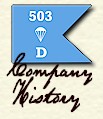 |
"Local
patrols, 2 POW brought in by civilians. Password Rolling-Plane
(plain)." |
|
 |
"Second
platoon with LMG attached & working with Filipino Regulars, attacked a
strong point at San Jose. Enemy force estimated to be two hundred
strong. Fire fight started at 1700 & lasted for two hours. Enemy had dug
in positions and good supply of ammo. After fight 2d platoon withdrew
after counting 20 dead & Filipino regulars another 7 dead in their
sector. One prisoner was taken." |
|
|
|
|
 The
attack was made by the 3d platoon, I believe. Dan Lee was the 3d
platoon leader. The
attack was made by the 3d platoon, I believe. Dan Lee was the 3d
platoon leader.
I believe the 2d platoon
were out as security guards. The action lasted more like
twenty minutes. Had it lasted much longer the main body of the Japs
would have gotten involved, and this was not the intent. The intent was
a hit and run attack.
Early this morning the
Filipinos showed up, were briefed and given an SCR-536 radio. Both
forces left with Jessie and his men acting as guides. Lee detrucked his
men at the point that Jessie had recommended. They quietly proceeded
and, nearing the river bend, they crawled in the tall grass up to the
bank. As they approached they heard laughing and talking. A group of
Japs were bathing below them in the foot deep water of the river. As
soon as everything was in place Lee opened his radio net. It was 1700
hr. To his great surprise he got an immediate reply, the Filipinos were
in place and ready. Lee had the mortars open their barrage. The LMG's
and BAR's joined in. They shot down the Japs in the river and shot up
the house. When the smoke round from the 60mm mortar exploded
every-one charged down the bank, across the river and the lawn, and into
the house.
To the surprise and
consternation of our men, the Filipinos beat them into the house and got
several sabers and pistols. Lee ordered everyone back to the trucks and
thence to Victorias. They had completely
by
passed the Jap defenses and wiped out
the headquarters as planned. The Filipinos arrived back first,
having the shortest distance to travel, and our mess fed them. When Dan
Lee and his force arrived we found he was the only American casualty. He
has suffered a gunshot wound in the left thigh, just as he had on 9
April at Sinaypanan. One of the Filipinos had suffered a gunshot wound
in his leg. Lee estimated thirty Japs killed.
Jessie and his team went
back up the next day. The Japs were gone - back to the mountains.
Strangely, the Japs had scampered without burying their dead. Jessie
counted twenty-seven bodies. I do not remember a prisoner being taken.
If one was taken, it probably would have been the next day when Jessie
and his men went there. A laborer might have been hiding there. Bill
Bailey had devised a brilliant plan to drive away a far superior force.
Dan Lee had performed brilliantly in his command position. The men of
both forces had done a superior job.
Unfortunately for "F"
Company, though, we would see Dan Lee no more. He did not return
from the hospital, and was sent home directly. We concluded that a
second shot in the leg was one shot too many for Lt. Lee. We would
have been glad to have the 3d Lt. and his men operate with us, but we
never saw them again. One might think this vindicates some guerrillas,
but the Third Lieutenant let us know quickly that they were not
guerrillas. They were Philippine Regulars. After seeing them in action
we knew it. This was a classic action - well scouted, well planned, and
well executed.
The two agricultural
experts, M. Scott and Mr. Sanford, now arrived at Victorias, and I
was given the task of seeing to their welfare while they assessed the
agriculture facilities in the sector. Much of their time was spent in
examining the Victorias Milling Company and several other sugar mills.
Mr. Scott was probably fifty years old and a long time employee of the
United States Department of Agriculture, with years of experience in the
Philippines. Mr. Sanford was probably fifteen years his junior. Their
assignment was to assess the damage and estimate how long it would take
to get the "bread basket" back into production. The Victorias Milling
Company was a small town mill, and little damage had been done to
it, so operations could begin with little effort.
Mr. Scott, whom I got to
know quite well, was well familiar with the region, and with the social
system which had developed there. It was a throwback in time, and
entirely feudal in nature. We had seen as much already and had formed
the very same opinion. The planters owned thousands of hectares of land,
and with ownership of the land seemed to come the ownership of the
laborers who worked it. Sugar cane
was the money crop, and there was no land entitlement except bare
self-sufficiency at the mercy of the plantation owners. It was an
ideal climate and they produced two crops a year. Many growers had
acquired large coconut groves, rice fields, and other crop lands. These
planters, Scott told me, were amongst the richest people in the world.
Many planted, vacationed in Europe until harvest time, came home for for
harvest time, and started the cycle over again. "When a planter dines in
a fine restaurant in Europe," he added, "they take a spoonful of sugar
from the sugar bowl and throw it on the floor. This is the international
sign of the sugar planter." After a couple of days their task was
completed, and I took them back to Bacolod.
While
we were at Victorias one of the planters, living out in his rural
hacienda, offered us his cars. He took us to a large bamboo thicket where some of his
employees had recently cut a wide path into the thicket. Were it
not for the path, no one would ever have noticed a corrugated steel
building hidden there. It was a sizeable building, and inside it were
twelve cars. Most were large, expensive cars. One was sent to Bacolod to
serve as a limousine for visiting VIP's. I believe it was a Packard or
a Cadillac. One was a small, older car, a Whippet. We were
tempted to take this one to Victorias and use it for our own purposes,
but RCT had told us that under no circumstances were we to remove any of
the other cars, except the limousine they had selected.
Late
one afternoon a wrinkled, gray-headed old Filipino and his ancient wife
came up the asphalt, U-shaped drive to the front of the municipal
building. He was leading a caribou which pulled a two wheel cart. The
old woman was sitting in the cart. They stopped at the entrance, the old
woman got out, and the old man pulled out a tightly bound Jap soldier
who had been lying on the bed of the cart. In fact the old woman had
been sitting on him. They spoke no English, so one of the locals had to
interpret their Western Visayan dialect. The old man's nose had almost
been severed. The old man said early that morning the Jap had come into
their house up in the mountains brandishing a bayonet and demanding
food. The old man had refused, and the Jap struck him across the nose
with his bayonet. The old man subdued the Jap, bound him up, and they
headed for Victorias to turn the Jap over to us. Fortunately, the
old fellow had brought the severed nose with him.
We
put the Jap in the
city jail and sent the old man and woman to Bacolod for medical
treatment. There, our surgeons
and medics sewed the old man's nose back into place, and ultimately sent
him back to us by jeep. The fellow hitched up their caribou and
cart, his wife climbed into the cart, and they were last seen headed
back for the mountains and home. Like mountain folk everywhere these
people were tough. |
|
|
È |
|
|
 |
|
|
|
30 June 1945

|

|
"Preparation for inspection by task force commander. 2 POW brought in by
civilians." |
|
|
È |
|
|
 |
|
|
|

![]()
